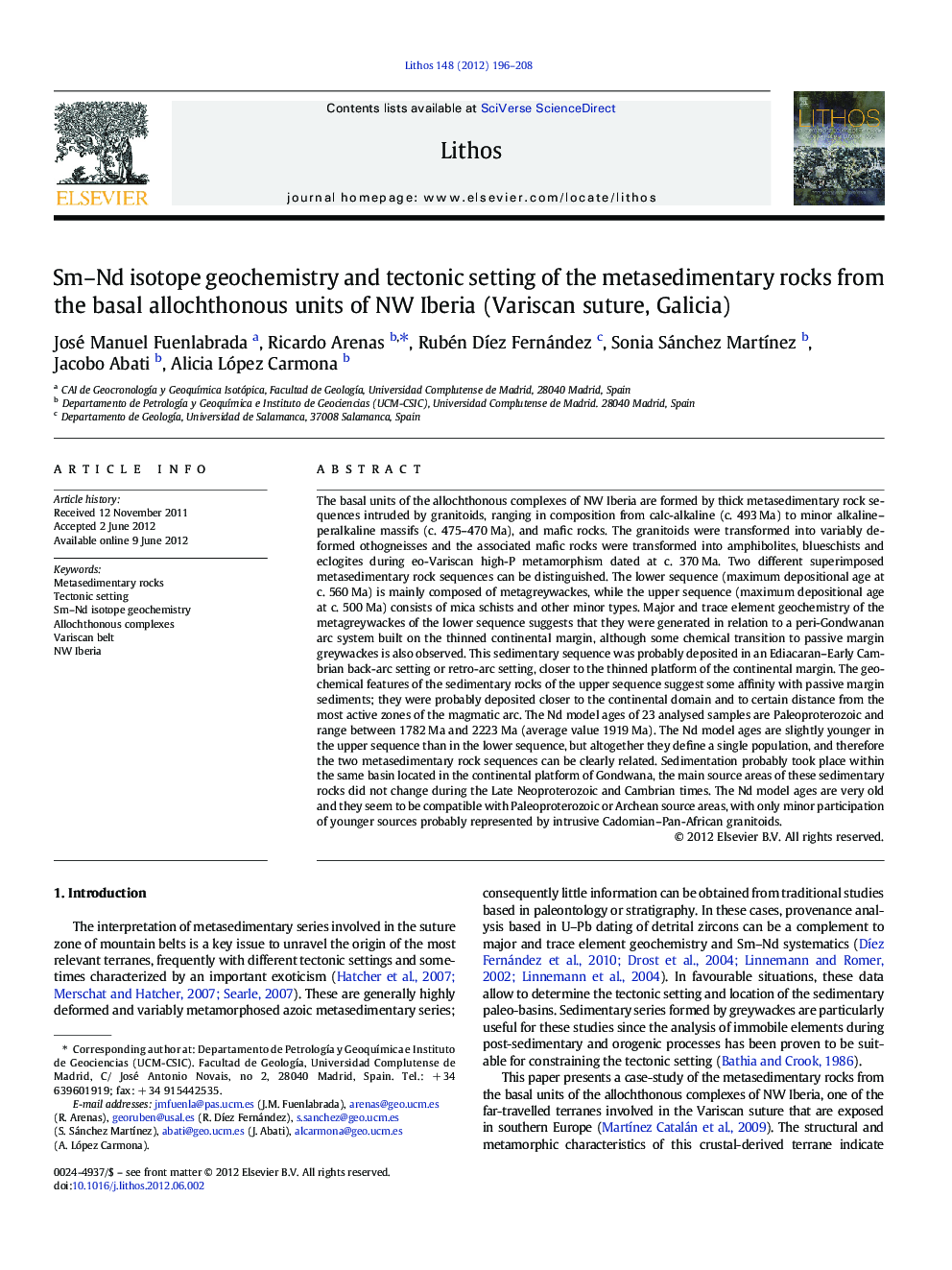| Article ID | Journal | Published Year | Pages | File Type |
|---|---|---|---|---|
| 4716551 | Lithos | 2012 | 13 Pages |
The basal units of the allochthonous complexes of NW Iberia are formed by thick metasedimentary rock sequences intruded by granitoids, ranging in composition from calc-alkaline (c. 493 Ma) to minor alkaline–peralkaline massifs (c. 475–470 Ma), and mafic rocks. The granitoids were transformed into variably deformed othogneisses and the associated mafic rocks were transformed into amphibolites, blueschists and eclogites during eo-Variscan high-P metamorphism dated at c. 370 Ma. Two different superimposed metasedimentary rock sequences can be distinguished. The lower sequence (maximum depositional age at c. 560 Ma) is mainly composed of metagreywackes, while the upper sequence (maximum depositional age at c. 500 Ma) consists of mica schists and other minor types. Major and trace element geochemistry of the metagreywackes of the lower sequence suggests that they were generated in relation to a peri-Gondwanan arc system built on the thinned continental margin, although some chemical transition to passive margin greywackes is also observed. This sedimentary sequence was probably deposited in an Ediacaran–Early Cambrian back-arc setting or retro-arc setting, closer to the thinned platform of the continental margin. The geochemical features of the sedimentary rocks of the upper sequence suggest some affinity with passive margin sediments; they were probably deposited closer to the continental domain and to certain distance from the most active zones of the magmatic arc. The Nd model ages of 23 analysed samples are Paleoproterozoic and range between 1782 Ma and 2223 Ma (average value 1919 Ma). The Nd model ages are slightly younger in the upper sequence than in the lower sequence, but altogether they define a single population, and therefore the two metasedimentary rock sequences can be clearly related. Sedimentation probably took place within the same basin located in the continental platform of Gondwana, the main source areas of these sedimentary rocks did not change during the Late Neoproterozoic and Cambrian times. The Nd model ages are very old and they seem to be compatible with Paleoproterozoic or Archean source areas, with only minor participation of younger sources probably represented by intrusive Cadomian–Pan-African granitoids.
► We investigate the origin of metasedimentary rocks from the basal units of NW Iberia. ► Two superimposed sequences were deposited in a common sedimentary basin. ► This basin was located in a peri-Gondwanan back-arc setting. ► Sedimentation occurred in Ediacaran–Early Paleozoic time. ► The Nd model ages suggest mainly Paleoproterozoic or Archean source areas.
